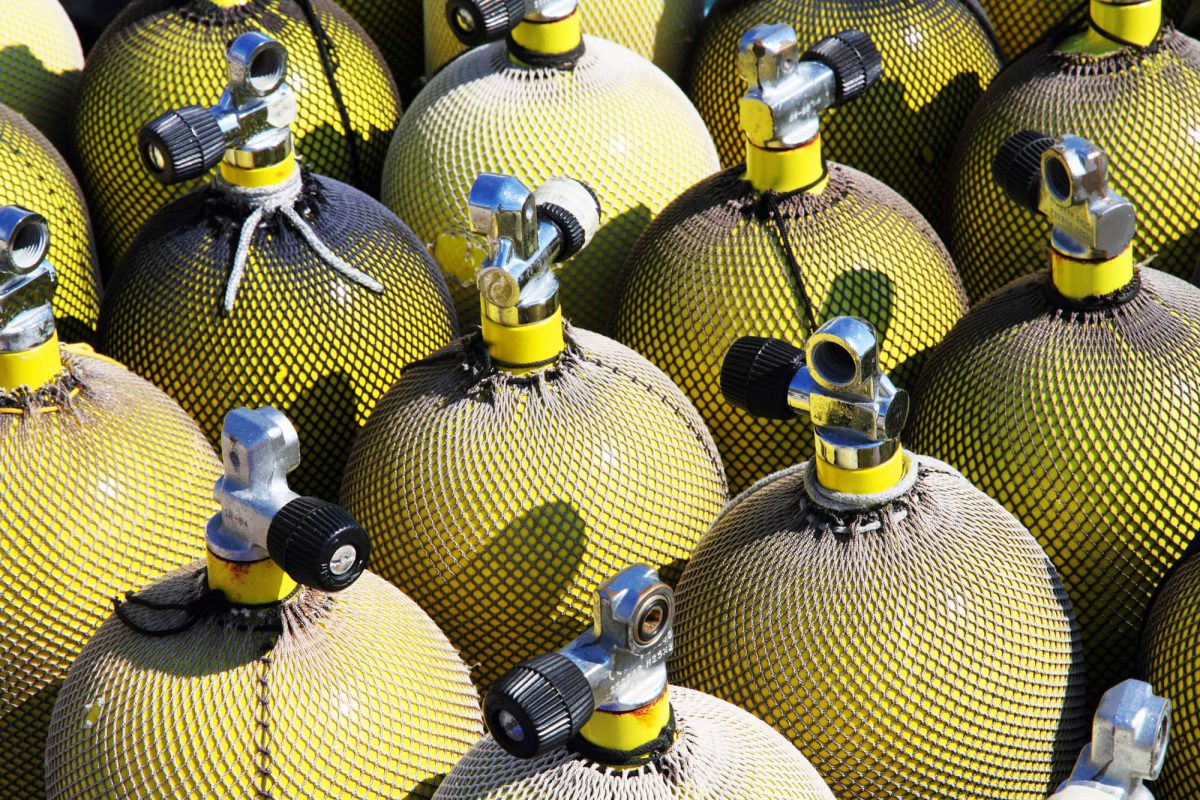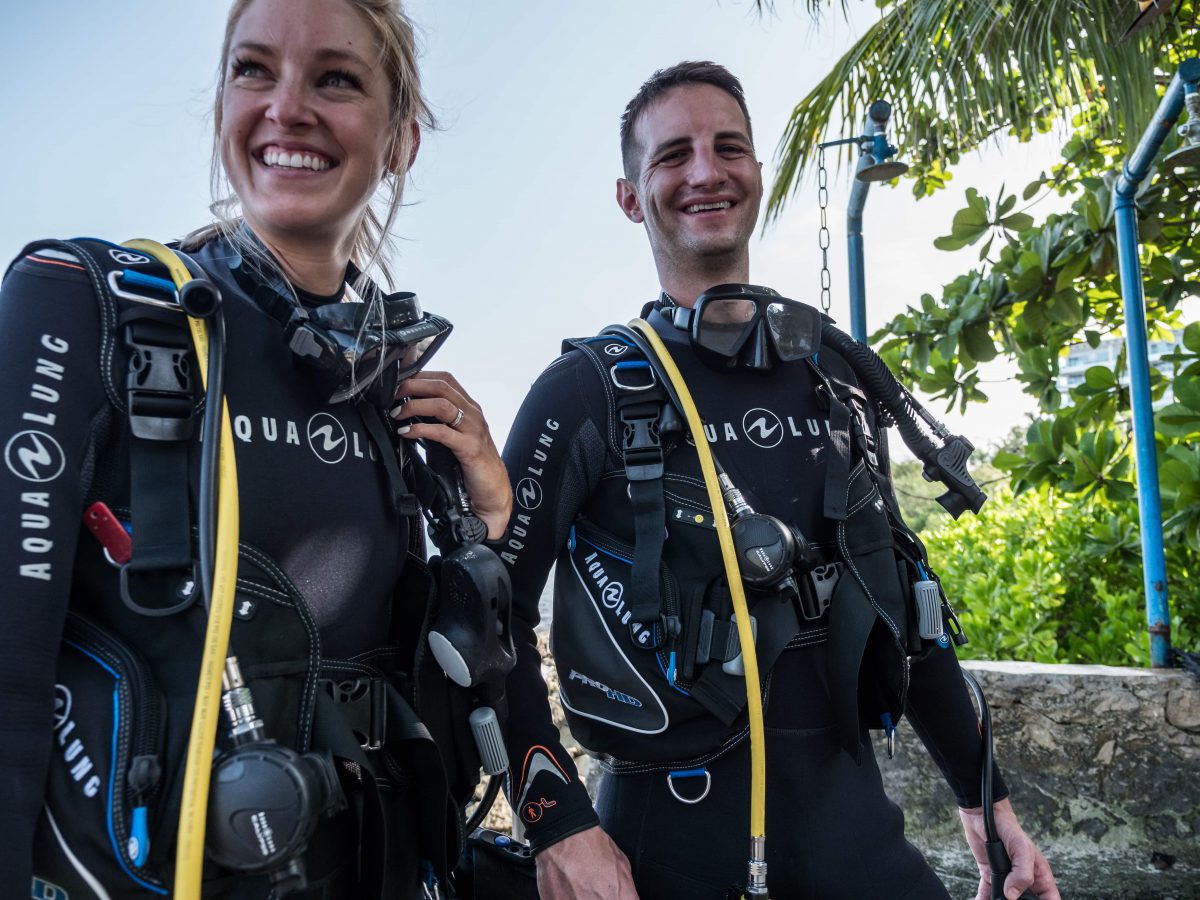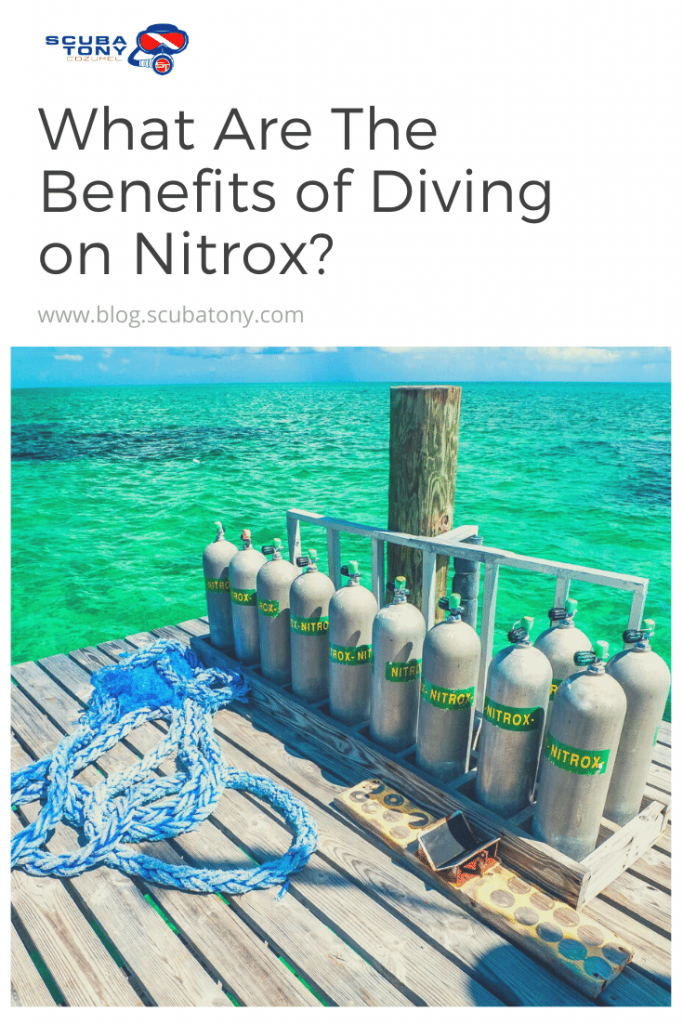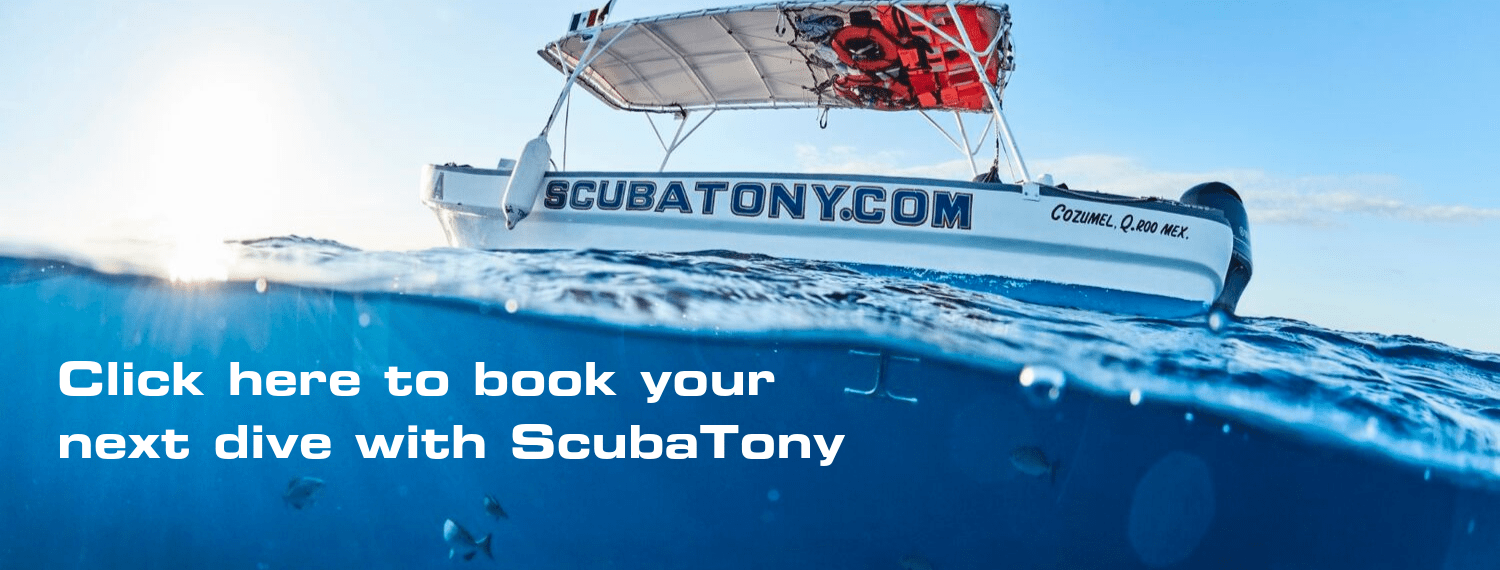We are pleased to be able to offer our guests Nitrox 32 in Cozumel at ScubaTony. Many people ask us about the PADI Nitrox Course and are often confused about the benefits of diving on Nitrox.
So, we decided to put together this blog post to answer some of your questions and explain a bit about both the benefits of diving with Nitrox and what the Nitrox course (including the PADI Nitrox exam) entails.
So to clear up some of that confusion we need to start at the basics…
What happens in your body when you Scuba Dive
Quick science lesson… stay with me!
On the surface, the air we breath is made up of many gasses including nitrogen and oxygen (the two gasses we need to know about when diving we ignore the others). In normal air in a scuba cylinder, the ratio is similar to what be breath on the surface 79/21 – 79% nitrogen and 21% oxygen.
Now let’s go back to your Open Water Course…
When you are diving your body absorbs more of the gasses that you are breathing due to the increased pressure than you would on the surface. That means that the nitrogen you are breathing underwater begins to build up. Unlike oxygen, our bodies don’t actually need that much nitrogen so it just floats around in our bodies.
As divers, we don’t want to take on too much Nitrogen, which is why we always keep an eye on our depth and can only stay at a certain depth for a given amount of time. When you are close to your “no stop” time you need to ascend, so you reduce your chances of getting decompression sickness (bent). You don’t want to be pushing this limit.
What is No Stop?
‘No stop’ is another term thrown around which often confuses people.
To put it simply your ‘no-stop’ time is the length you can safely dive at a given depth without having to take an extra safety stop, to expel excess nitrogen.
Most divers now dive with a dive computer which will work this out for you. You can normally find your “no stop” time next to the length of time you have been on your dive.
Okay, so now we have cleared that up, it’s time for the big question…

What is Nitrox?
Nitrox is when they change the regular tank of air you breath when diving, and add in more oxygen to it. When you are diving with Nitrox, you are breathing enriched air (with extra Oxygen in it).
Nitrox 32 simply means there is 32% Oxygen in the gas.
With standard scuba cylinders, you will find the percentage of Oxygen is more like 20.8%, which is close to what we breathe in everyday life on the surface (see above science lesson).
What are the benefits of diving Nitrox?
Science lesson over! So now you know what Nitrox is you are probably wondering what the benefits of diving on Nitrox are. Well here are the three main reasons for diving on Nitrox.
The number one reason to dive on Nitrox is the added safety measure. I’m going to quote Dr. Dario Gomez who is not only the DAN medical liaison but also the Doctor at the Chamber in the Aquatic Sports Medicine Center at CostaMed in Cozumel who said:
“Nitrox mixes are prepared across a range of concentrations. It has a lot to offer divers, but it’s not magic; rather, it’s a useful tool that provides benefits if used correctly. When diving air tables or using the air setting on a dive computer, Nitrox can reduce decompression stress on a diver. When used with an equivalent air depth, this safety margin is lost, but bottom time can be extended.”
I would like to emphasize by “extending bottom time,” what he means is that you can stay at a specific depth longer than on air, without going into “No Stop”. What he doesn’t mean is that diving on Nitrox will increase your actual bottom time length.
The second reason to dive on Nitrox is that you can stay at a given depth for longer on air – as stated above.
The final reason, some say is a placebo effect. It is believed that diving on Nitrox will make you feel better post-dive. Although there may not be any hard scientific evidence to prove this theory, either way, I know I personally feel a lot better when I dive on Nitrox. I don’t need a nap, which I commonly do after diving two tanks on air.
If you ask most people that dive on Nitrox, they will all say the same thing, they feel a lot better when diving on Nitrox than they do after diving on normal air.

What Nitrox won’t do
A common misconception is that Nitrox will increase your overall bottom time.
Nitrox does not give you a longer dive.
Just longer time at a deeper depth, safely.
If you are not Nitrox certified and this seems like something you want to do, let us know and we can certify you the next time you are here. It’s a pretty quick course and will not take much of your time.
What Will I Learn on the PADI Nitrox Course?
The PADI Nitrox course (or Enriched Air Diver course) is one of the most popular specialty scuba diving courses because it’s quick and divers get so many benefits like being able to stay down longer and being able to get back in the water quicker.
Anyone who holds the OWD certificate can take the course and the minimum age is 12 years old.
On the course, you will have a ‘classroom’ section where you will learn all about the relationship between the gasses, pressures, and your limitations when diving. Specifically, you will learn why diving with air that has more oxygen and less nitrogen will give you more bottom time, the enriched air equipment, and as always safety considerations and hazards.
You will also learn how to analyze the gas mix in your tank, and this is something you will need to do yourself, as well as working out your depth and time limits to pass the test.
What is involved in the PADI nitrox exam?
It’s actually pretty simple and nothing you need to worry about, so long as you pay attention, of course! The actual PADI nitrox exam consists of 25 questions that you will need to answer on a written paper. You will also need to be able to analyze the oxygen percentage of the nitrox and learn a few simple mathematical formulas, but all of this will be covered on the course.
Are you ready to book your Nitrox course? Contact us today and we will get you booked on.






